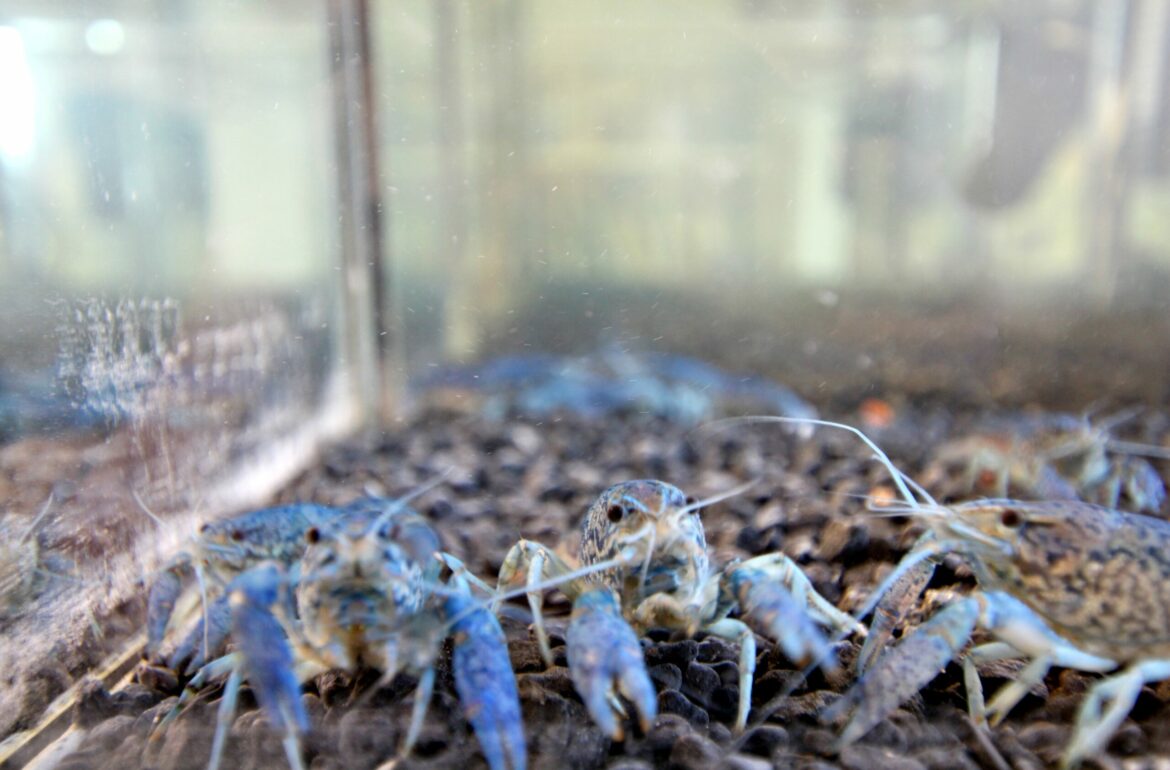The scientist Fabio Ercoli, who discovered marbled crayfish last autumn in the cooling canal of Narva power plant, was test-fishing in the same area on 31 May in the company of researchers Katrin Kaldre and Margo Hurt from Chair of Aquaculture, and noted that unfortunately the dangerous invasive species has settled well in the water body and developed a significant population.
The danger of the marbled crayfish lies in the fact that they don’t need a male for reproduction, all crayfish are female and capable of reproducing every few months. Already in the near future, scientists are going to study whether the aggressive marble crayfish, being potentially dangerous to the Estonian European crayfish, only live in the canal with water temperatures higher than the natural background levels, or whether some specimens have reached Narva reservoir, too.

Dr Fabio Ercoli is studying the invasive species of Finland and Estonia (mainly the Chinese sleeper and the black goby) and their impact on food chains in the context of climate change. He was looking for freshwater gobies in the cooling canal of Narva power plant, too. As he had no time to examine the samples taken at the end of last September, they were deep-frozen. Last Christmas, he had time to defrost the samples and discovered among the caught specimens six marble crayfish. This species has been discovered in the wild in a dozen European countries; however, in Estonia it happened for the first time.
Due to its characteristic appearance and resilience, marble crayfish is a highly-valued aquarium fish in zoo shops. According to Ercoli, the reason for the escape of an alien species into nature may also be the human factor. “One day somebody probably bought a nice crayfish for their aquarium. But soon the aquarium was packed with crayfish, the owner got fed up with them and instead of killing them released them into the wild,” he described a probable scenario.
The tests taken by Katrin Kaldre, who is about to defend her doctoral thesis based on research results on invasive crayfish species, show that marble crayfish is an extremely adaptable species that can also stay alive in cool waters. Thus, it cannot be entirely excluded that crayfish can also be found further from the mentioned warm water canal. All this must be thoroughly studied and it is still too early for guesswork, Ercoli underlined. For the time being, the dynamics of the canal crayfish population is under examination.
Climatic changes and invasive species are the two main changes in terrestrial and aquatic ecosystems, Ercoli elaborated on his research topic. The dreaded rise in air and water temperature hasn’t yet been high enough to cause the death of traditional fauna and flora in the northern latitudes and the spread of invasive species but scientists are keeping a beady eye on food webs based on organic matter and their energy sources.
Original post by Estonian University of Life Sciences
 Back
Back



